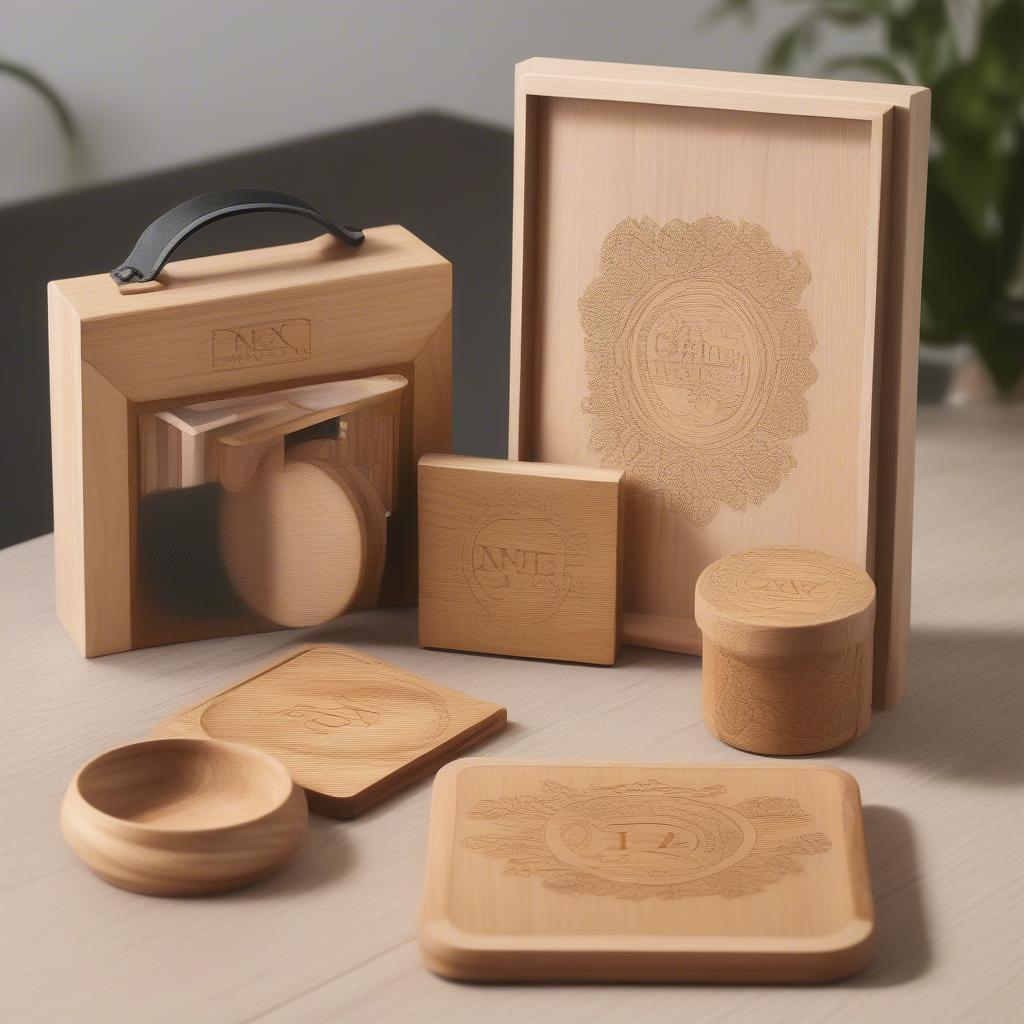Print On Wood offers a unique way to blend the natural beauty of wood with personalized designs, creating captivating pieces for both home decor and business branding. Whether you’re crafting wall wooden frame or simply exploring a new artistic medium, understanding the process of printing on wood is crucial for achieving stunning results.
Different Methods to Print on Wood
There are several methods you can use to print on wood, each offering distinct advantages and disadvantages. Choosing the right one depends on your project’s specific needs, budget, and desired aesthetic.
Direct Printing with a UV Printer
This method involves printing directly onto the wood surface using specialized UV-cured inks. UV printers offer high-resolution prints with vibrant colors and excellent durability. They’re ideal for large-scale projects and intricate designs.
Heat Transfer Printing
Heat transfer printing utilizes a combination of heat and pressure to transfer an image printed onto transfer paper onto the wood. This method is cost-effective for smaller batches and can be achieved with a standard heat press.
Sublimation Printing
Sublimation printing is another popular technique that infuses dye-sublimation inks directly into the wood fibers. This creates a permanent print that becomes part of the wood itself, offering a natural and long-lasting finish. It’s perfect for items like personalized wooden coasters or photo plaques.
 UV Printer Printing Directly on Wood
UV Printer Printing Directly on Wood
Stenciling and Hand Painting
For a more hands-on approach, stenciling and hand painting allow for intricate detailing and personalized touches. Stencils can be created from various materials, and acrylic paints are a popular choice due to their durability and vibrancy. This is a great option for smaller projects or unique, handcrafted wooden wall frames.
Preparing Your Wood for Printing
Regardless of your chosen printing method, proper wood preparation is crucial for optimal results. Ensure the wood surface is clean, dry, and free from dust or debris. Sanding the wood can also create a smoother surface for printing and improve ink adhesion. For some methods, like sublimation, specific types of wood with a polymer coating may be required.
What type of wood is best for printing?
Choosing the right type of wood depends on the print method and the final product you envision. Lighter woods like maple and birch are well-suited for printing due to their smooth surface and ability to accept ink evenly. Natural wood framed mirrors often utilize lighter woods to complement the mirror’s reflectivity.
 Sanding Wood for Printing
Sanding Wood for Printing
Tips for Successful Printing on Wood
- Choosing the Right Ink: Selecting the correct ink is vital for the longevity and vibrancy of your print. UV-cured inks are known for their durability and fade resistance, making them suitable for outdoor applications.
- Image Resolution: Using high-resolution images ensures sharp and detailed prints, especially for intricate designs or photographs.
- Testing: Always test your print on a scrap piece of wood before committing to your final project. This allows you to adjust settings and ensure the desired outcome.
- Sealing: Applying a sealant after printing can protect the print and enhance its durability.
Wood Printing Applications
From custom signage and promotional items to personalized gifts and home decor, the possibilities with printing on wood are endless. You can create unique wall art, coasters, phone cases, or even wood wall frame. Businesses often utilize this technique for creating branded products, adding a touch of natural elegance to their marketing materials. Imagine crafting stunning wall art using a framing wood home depot find.
 Examples of Printed Wood Products
Examples of Printed Wood Products
“Wood printing allows for a unique blend of artistry and practicality,” says Amelia Woodcraft, a renowned artisan specializing in woodworking and print design. “It bridges the gap between traditional craftsmanship and modern technology, offering exciting possibilities for both creators and consumers.”
Printing on wood offers a versatile and rewarding way to personalize and enhance various projects. By understanding the different printing methods, preparing your wood correctly, and following best practices, you can achieve truly stunning and long-lasting results. Consider print on wood for your next project, and unlock a new dimension of creative expression.
FAQs
- Can I print on any type of wood?
- What is the most durable printing method for wood?
- What type of ink is best for outdoor wood prints?
- Do I need special equipment for printing on wood?
- How can I seal a wood print to protect it from the elements?
- Where can I find high-quality wood for printing?
- What are some common mistakes to avoid when printing on wood?
For further assistance and inquiries, please contact us at My Dinh, Hanoi, Vietnam, or San Francisco, CA 94105, USA. Our 24/7 customer service team is ready to assist you.


